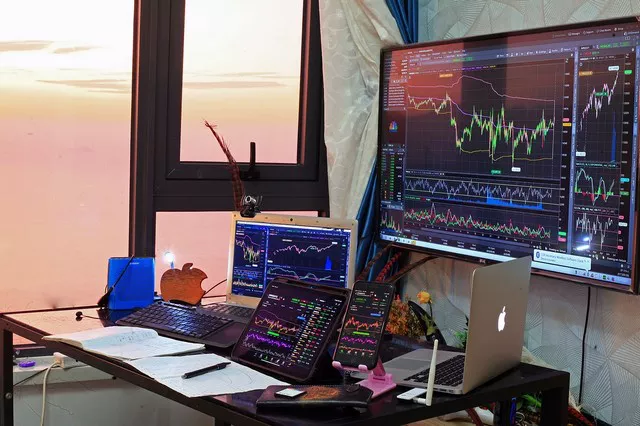Choosing futures contracts as an investment or hedging tool requires careful consideration of various factors, including market conditions, risk tolerance, investment goals, and understanding of the underlying commodities or financial instruments. This article provides a comprehensive guide to help investors and traders navigate the process of selecting futures contracts effectively.
Understanding Futures Contracts
What Are Futures Contracts?
Futures contracts are standardized agreements to buy or sell a specified asset at a predetermined price on a future date. They are traded on organized exchanges and serve as essential financial instruments for managing price risk, speculating on price movements, and gaining exposure to various commodities, financial indices, currencies, and interest rates.
Factors to Consider When Choosing Futures Contracts
1. Underlying Asset Class
Futures contracts cover a wide range of underlying assets, including:
Commodities: Agricultural products (e.g., corn, wheat), energy (e.g., crude oil, natural gas), metals (e.g., gold, silver).
Financial Instruments: Stock indices (e.g., S&P 500), interest rates (e.g., Treasury bonds), currencies (e.g., Euro, Japanese Yen).
Select futures contracts based on your familiarity with the underlying asset class, market outlook, and investment objectives. Consider factors such as supply-demand dynamics, geopolitical events, and macroeconomic trends that may impact the asset’s price movements.
2. Contract Specifications
Each futures contract has specific terms and specifications that investors should understand:
Contract Size: The amount of the underlying asset covered by one futures contract.
Expiration Date: The date by which the contract must be settled or closed out.
Tick Size and Value: Minimum price movement and corresponding monetary value per tick.
Trading Hours: Regular trading hours and any extended trading sessions.
Compare contract specifications across different futures contracts to determine which aligns best with your trading strategy, capital requirements, and risk management preferences.
3. Market Liquidity
Liquidity refers to the ease of buying or selling a futures contract without significantly impacting its price. Choose futures contracts with sufficient trading volume and open interest to ensure liquidity. High liquidity reduces transaction costs, minimizes slippage, and provides flexibility in executing trades.
4. Risk and Volatility
Evaluate the risk and volatility characteristics of potential futures contracts:
Volatility: Measure of price fluctuations over time. Higher volatility can present trading opportunities but also increases risk.
Margin Requirements: Initial margin and maintenance margin levels set by exchanges to cover potential losses. Understand margin requirements and their impact on capital allocation and risk management.
Assess your risk tolerance and ability to withstand market fluctuations when selecting futures contracts. Implement risk mitigation strategies, such as stop-loss orders and position sizing, to manage exposure and protect capital.
5. Market Analysis and Research
Conduct thorough market analysis and research to support your futures trading decisions:
Technical Analysis: Study price charts, trends, support and resistance levels, and technical indicators to identify potential entry and exit points.
Fundamental Analysis: Analyze supply-demand fundamentals, economic data, geopolitical factors, and industry-specific news affecting the underlying asset.
Utilize research tools, market data platforms, and professional insights to enhance your understanding of market dynamics and inform your futures contract selection process.
6. Trading Strategy and Objectives
Define your trading strategy and investment objectives when choosing futures contracts:
Speculation: Capitalize on anticipated price movements to generate profit.
Hedging: Manage price risk associated with physical commodities or financial positions.
Portfolio Diversification: Enhance portfolio risk-adjusted returns by incorporating futures contracts with low correlation to traditional assets.
Align your futures trading strategy with your financial goals, time horizon, and tolerance for market volatility. Maintain discipline and adherence to your trading plan to achieve consistent performance and mitigate emotional decision-making.
See Also: Does Perpetual Futures Affect Spot Price?
Steps to Choosing Futures Contracts
1. Define Your Investment Goals
Clarify your investment goals, whether seeking capital appreciation, income generation, risk management, or portfolio diversification through futures trading.
2. Select an Asset Class
Choose an asset class (commodities, financial instruments) based on market insights, economic outlook, and your familiarity with the asset’s supply-demand dynamics.
3. Research Contract Specifications
Review contract specifications, including contract size, expiration date, tick size, and trading hours, to ensure compatibility with your trading strategy and risk management approach.
4. Assess Market Liquidity
Evaluate liquidity metrics such as trading volume and open interest to confirm sufficient market depth and liquidity for efficient trade execution.
5. Evaluate Risk and Volatility
Assess risk factors, including volatility levels and margin requirements, to gauge potential price fluctuations and financial exposure associated with the futures contract.
6. Conduct Market Analysis
Perform comprehensive market analysis using technical and fundamental approaches to identify favorable trading opportunities and mitigate risks.
7. Develop a Trading Plan
Formulate a structured trading plan outlining entry and exit criteria, risk management strategies, position sizing rules, and contingency plans for adverse market conditions.
Conclusion
Choosing futures contracts involves assessing multiple factors, including asset class suitability, contract specifications, market liquidity, risk considerations, and alignment with trading objectives. By conducting thorough research, performing market analysis, and developing a disciplined trading plan, investors can make informed decisions and capitalize on futures trading opportunities effectively. Whether speculating on price movements, hedging against market risks, or diversifying investment portfolios, futures contracts offer versatile tools for achieving financial goals and managing investment exposures. With a clear understanding of market dynamics and diligent risk management, investors can navigate the complexities of futures trading and pursue sustainable long-term returns in the global derivatives market.

